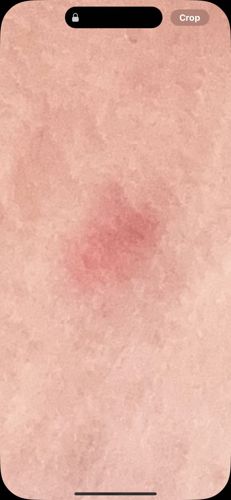Mosquito
Scientific Name: Culicidae
Order & Family: Diptera, Culicidae
Size: 3 mm to 10 mm (0.1 to 0.4 inches)

Natural Habitat
Mosquitoes are found virtually worldwide, in all habitats except Antarctica and a few oceanic islands. They require standing water for breeding, so they are common near marshes, swamps, ponds, lakes, ditches, and even small containers of water in urban areas.
Diet & Feeding
Female mosquitoes feed on blood to obtain proteins for egg development, typically from mammals, birds, and sometimes reptiles and amphibians (including humans). Both male and female mosquitoes feed on nectar and plant juices for energy.
Behavior Patterns
Mosquitoes are most active during dawn and dusk, though some species are active during the day. They have a complete metamorphosis life cycle (egg, larva, pupa, adult). Females locate hosts primarily by detecting carbon dioxide, body odor, and heat. The pictured bite is a typical inflammatory response to mosquito saliva.
Risks & Benefits
Risks: Mosquitoes are significant vectors for numerous diseases including malaria, dengue fever, Zika virus, West Nile virus, chikungunya, and yellow fever, leading to millions of illnesses and deaths annually. Their bites cause itchy welts. Benefits: In their larval and adult stages, mosquitoes serve as a food source for various animals like fish, birds, bats, and other insects within ecosystems. They also play a role in pollination by visiting flowers for nectar.
Identified on: 9/4/2025